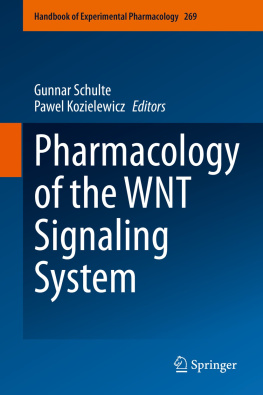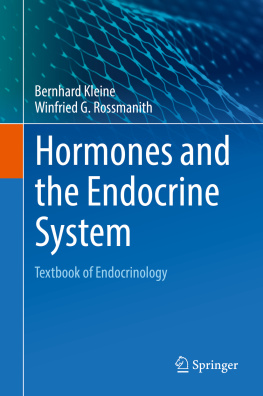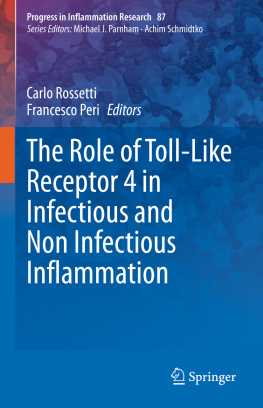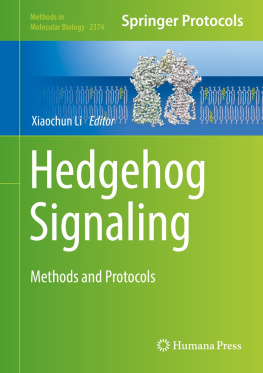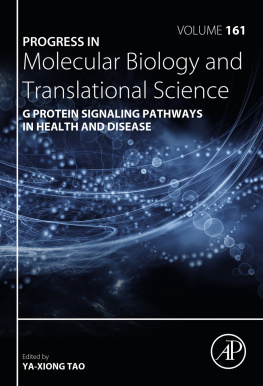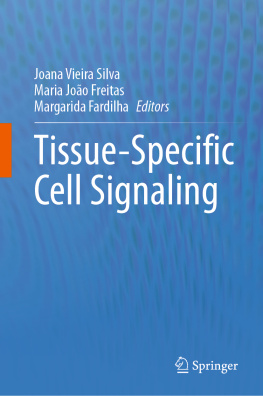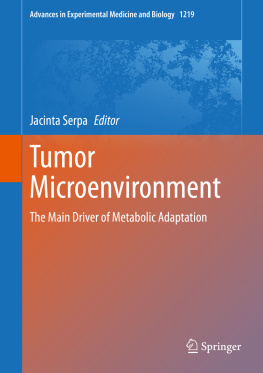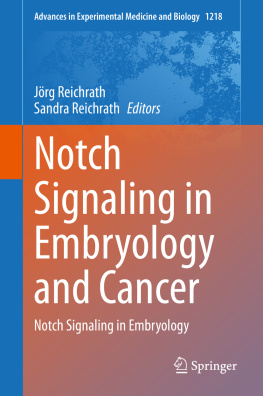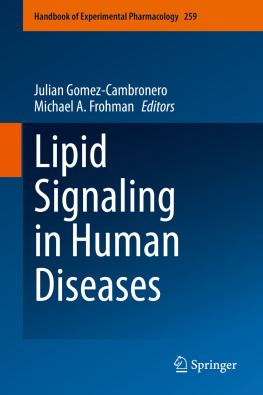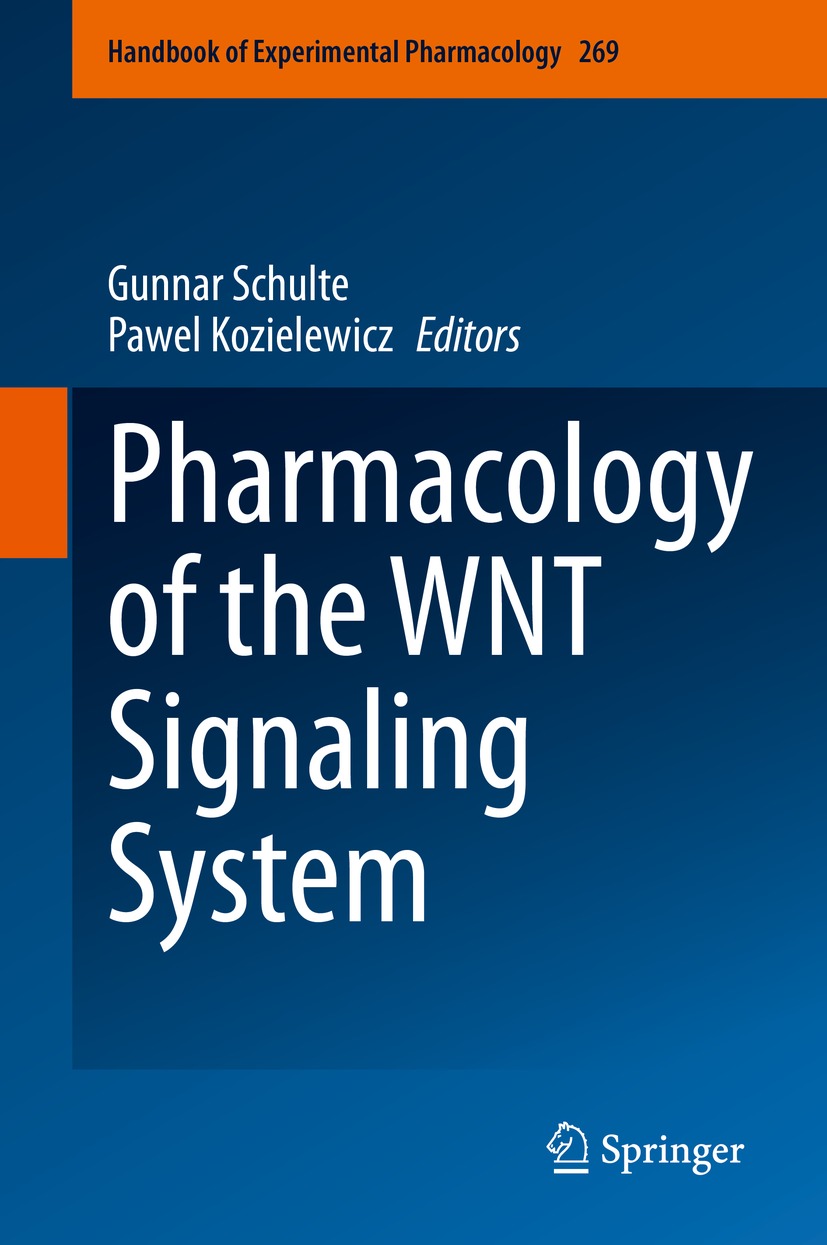Volume 269
Handbook of Experimental Pharmacology
Editor-in-Chief
James E. Barrett
Center for Substance Abuse Research, Lewis Katz School of Medicine at Temple University, Philadelphia, PA, USA
Editorial Board
Veit Flockerzi
Institute for Experimental and Clinical Pharmacology and Toxicology, Saarland University, Homburg, Germany
Michael A. Frohman
Center for Developmental Genetics, Stony Brook University, Stony Brook, NY, USA
Pierangelo Geppetti
Headache Center, University of Florence, Florence, Italy
Franz B. Hofmann
Forschergruppe 923 Carvas, Technical University, Mnchen, Germany
Rohini Kuner
Institute of Pharmacology, Heidelberg University, Heidelberg, Germany
Martin C. Michel
Department of Pharmacology, University of Mainz, Mainz, Germany
Clive P. Page
SIPP, Kings College London, London, UK
KeWei Wang
School of Pharmacy, Qingdao University, Qingdao, China
The Handbook of Experimental Pharmacology is one of the most authoritative and influential book series in pharmacology. It provides critical and comprehensive discussions of the most significant areas of pharmacological research, written by leading international authorities. Each volume in the series represents the most informative and contemporary account of its subject available, making it an unrivalled reference source.
HEP is indexed in PubMed and Scopus.
More information about this series at https://link.springer.com/bookseries/164
Editors
Gunnar Schulte and Pawel Kozielewicz
Pharmacology of the WNT Signaling System
1st ed. 2021

Logo of the publisher
Editors
Gunnar Schulte
Department of Physiology & Pharmacology Section for Receptor Biology & Signaling, Karolinska Institutet Biomedicum 6D, Stockholm, Sweden
Pawel Kozielewicz
Department of Physiology & Pharmacology Section for Receptor Biology & Signaling, Karolinska Institutet Biomedicum 6D, Stockholm, Sweden
ISSN 0171-2004 e-ISSN 1865-0325
Handbook of Experimental Pharmacology
ISBN 978-3-030-85498-0 e-ISBN 978-3-030-85499-7
https://doi.org/10.1007/978-3-030-85499-7
The Editor(s) (if applicable) and The Author(s), under exclusive license to Springer Nature Switzerland AG 2021
This work is subject to copyright. All rights are solely and exclusively licensed by the Publisher, whether the whole or part of the material is concerned, specifically the rights of translation, reprinting, reuse of illustrations, recitation, broadcasting, reproduction on microfilms or in any other physical way, and transmission or information storage and retrieval, electronic adaptation, computer software, or by similar or dissimilar methodology now known or hereafter developed.
The use of general descriptive names, registered names, trademarks, service marks, etc. in this publication does not imply, even in the absence of a specific statement, that such names are exempt from the relevant protective laws and regulations and therefore free for general use.
The publisher, the authors and the editors are safe to assume that the advice and information in this book are believed to be true and accurate at the date of publication. Neither the publisher nor the authors or the editors give a warranty, expressed or implied, with respect to the material contained herein or for any errors or omissions that may have been made. The publisher remains neutral with regard to jurisdictional claims in published maps and institutional affiliations.
This Springer imprint is published by the registered company Springer Nature Switzerland AG
The registered company address is: Gewerbestrasse 11, 6330 Cham, Switzerland
Preface
The WNT family of secreted lipoglycoproteins was discovered more than 35 years ago and it is established as a key player in embryonic development, tissue regeneration, and homeostasis as well as many devastating disorders such as developmental defects, diverse forms of tumors, bone disease, fibrosis, and neurodegenerative disorder (Willert and Nusse 2012). The 19 mammalian WNTs interact with a complex array of cell surface receptors, of which the Frizzleds (FZD110), members of the Class F of G protein-coupled receptors (GPCRs), present the main WNT receptors, which act either alone or in concert with coreceptors such as LRP5/6, ROR1/2, RYK, and PTK7 (Schulte 2010; van Amerongen 2012).
While many of the players of the WNT signaling system have been mapped and their biological functions are relatively well understood, mechanistic information on how WNT signals are molecularly interpreted by cells and translated into an intracellular response driving, for example, cell proliferation, migration of differentiation remains unclear. Since the field of WNT signaling has developed mainly with an origin in oncology and developmental biology, pharmacological aspects of this signaling system such as quantification of ligandreceptor binding and selectivity, molecular details of receptor activation and activation dynamics, and a quantitative understanding of ligandreceptor interaction in relationship to the amplitude of downstream effects are only slowly evolving.
Given the prominent association of WNT signaling with human disease, the concept of targeting this signaling system pharmacologically and therapeutically has been pursued intensively over the years in part with substantial success defining targetable components in the involved signaling cascades. However, it must be underlined that modulating a central signaling system that is absolutely essential for tissue renewal and homeostasis as most prominently exemplified by the rapid turnover of the intestinal epithelium, comes along with large risks for unwanted side effects.
In this Handbook of Experimental Pharmacology, international experts in the field provide a timely overview of molecular details of the signaling pathway ranging from WNT proteins themselves (Willert/Gross), cell surface receptors, such as Frizzleds (FZD; Schulte), LDL receptor-like proteins (LRPs; Davidson), and receptor tyrosine kinase-like orphan receptor (RORs; Mellstedt) over intracellular components such as the enigmatic scaffold protein Dishevelled (Bryja) to effector systems, such as the transcriptional regulator -catenin (van Amerongen). Emphasis is put on the details of molecular mechanisms of signal transduction in order to elucidate the molecular pharmacology of cellular communication. Furthermore, the reader is introduced to the druggability of different branches of the WNT signaling system including the planar cell polarity pathway (Gao) as well as the possibilities to screen for WNT system-targeting compounds from natural resources (Katanaev). While the potential indications for drugs modulating WNT signaling are numerous, only some important areas are exemplified here providing insight into the importance of FZD7 as a therapeutic target in intestinal cancers (Vincan), the use of WNT-derived peptides for anticancer therapy (Andersson), the opportunities of targeting lung disease (Gosens) and osteoarthritis (

